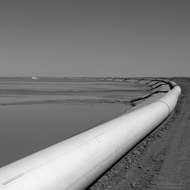Information about regulatory requirements for Tailings Storage Facilities in WA
| Date: | Thursday, 21 February 2019 |
|---|
The tragic loss of life and significant environmental impacts associated with the failure of a tailings storage facility (TSF) at Vale’s Córrego do Feijão iron ore mine in Brazil has highlighted the devastation that can occur when critical mine infrastructure fails.
In light of this tragedy it is important to provide information about similar infrastructure on Western Australian mines and how it is regulated.
There are more than 800 TSFs in Western Australia, with approximately two thirds categorised as shut - including historic TSFs.
The design, construction, operation and closure of all TSFs in Western Australian mines must comply with the Mines Safety and Inspection Act 1994 (MSIA 1994), Mines Safety and Inspection Regulations 1995 (MSIR 1995) and Mining Act 1978 as well as the department’s codes and guidelines.
The Department of Mines, Industry Regulation and Safety (DMIRS) requires mining companies to undertake rigorous design processes that match the designated risk/consequence profile for each TSF regardless of construction method. These design processes are set out in DMIRS' code of practice and guidelines.
These complex processes consider all the factors that can potentially impact on the stability of TSFs and the extent of unwanted outcomes. Examples of some of the factors assessed in the complex design processes include:
- The location and general layout of the site
- Size and height of the TSF
- Nature of materials to be stored in the TSF
- Tailings deposition method
- The liquefaction potential of the tailings where upstream and centreline construction methods can be more susceptible to dynamic and static loading
- Assessment of the effects of TSF failures (dam break studies) under a combination of worst case scenarios, and provision of control and management requirements
- Materials used for construction and foundations
- Climate, drainage, etc
- Construction methods.
Based on the above mentioned factors the TSFs in WA are grouped into three categories (1 to 3). Category 1 includes:
- Any TSF, regardless of its height, with potential to cause harm to humans, loss of public or private assets, and prolonged or permanent damage to the environment.
- All cross-valley TSFs and TSFs that are higher than 15m (regardless of their location, method of construction or the type of materials stored).
Category 1 TSFs require detailed and regular inspection and auditing, including the preparation and implementation of a site specific Operating Manual which sets out the safe and environmentally acceptable operating procedures, monitoring and reporting requirements, trigger levels and actions to be taken to rectify any impending deficiencies. Mining companies must submit the findings of audits to DMIRS.
Compliance is verified by DMIRS’ officers through site inspections and document review processes (i.e. Mining Proposals, Operating Audits, Mine Closure Plans and Project Management Plans). Where anomalies are identified, DMIRS has the capacity to impose additional conditions to the original proposal.
The vast majority of the TSFs built in WA by upstream construction methods are paddock storage situated on relatively gentle topography, with generally drier climatic conditions and less propensity to seismic events.
From what is currently understood, these general characteristics differ significantly from those at the Vale Córrego do Feijão TSF and more significantly, the Brazilian cross-valley TSF was significantly higher than current facilities in Western Australia.
The current regulatory approach to TSF management in WA was established subsequent to the Merriespruit tailings disaster in South Africa in 1994. Since then, our approach has been continually improved by incorporating the learnings from tailings incidents in other parts of the world. Any relevant new information attained from the Brazilian incident will also be considered for further improvements in TSF management in WA.

